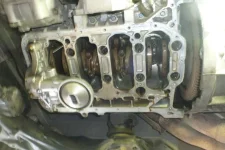OK understood, but that article REALLY didn't address your finer points nor did directly address the fact that some clown puts three qts over max.........kinda is an idiot and shouldn't even pop the hood.
Pablo, I intended to address the forum, not the author of the article.

Show me an engine with 7.75qts written required capacity, exact center of dipstick RANGE marks, that would even come up to MAX with 0.25qt more oil (8qts) AND with those 8 qts would suffer in any way. To me, this would be a very poor design!
I agree, it's unlikely that a quarter of a quart will cause issues in this case.
However there are idiots thinking 'more is better' putting two quarts more
in an engine with just 4 or 5 quarts capacity. Don't think it doesn't happen
on this forum. Even on Bitog the 'more is better' approach is fairly popular.
Engineers design engines knowing maintenance is sloppy, so they can operate just fine over filled and underfilled by a large amount.
What's 'a large amount' and how would you determine this amount?
I've seen many engines running just fine that are 2 + quarts low on oil. When most engines start, the level in the oil pan drops 1 - 2+ quarts, so it would be very hard to overfill an engine to the point the crank is touching the oil when running.
How did you determine these 'many' engine were actually running 'just fine'?
Granted, they were still running obviously, but under which conditions of use?
At two quarts low I wouldn't (edited) guarantee for sufficient oil pressure under
hard braking or cornering. Most engines will even survive that for a couple of
seconds but that isn't what I'd call a 'safe operating condition'.
In most engines the crankshaft is several Inches away from the maximum oil level when the engine is not running.
I think it is one of the myths of the internet: "The crankshaft splashes into the oil". It is less likely on most but possible on some cars.
I fixed that for you.
This is under static conditions - when the car is at a stand still. Imagine harder braking
or cornering or both. Anything's possible, remember boxer engines (without dry sumps).
.
